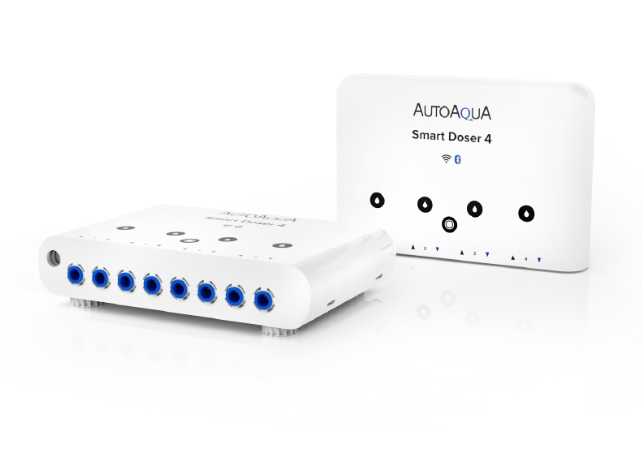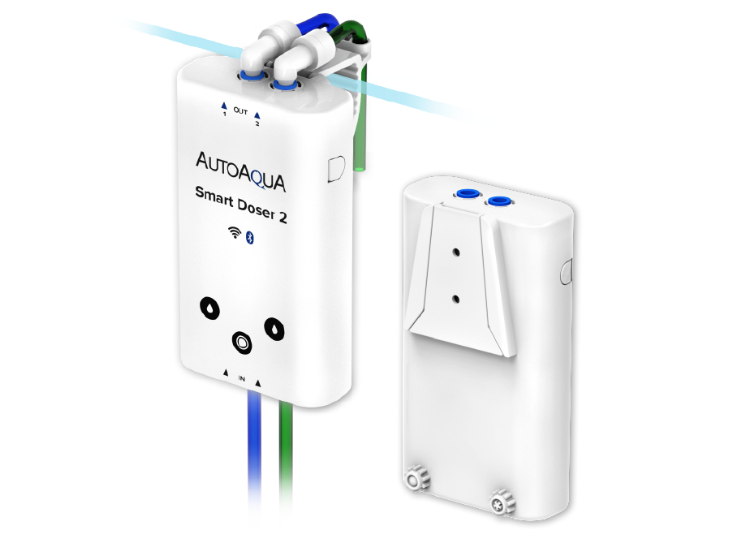ATO manufacturer AutoAqua has designed what it says is the World’s first and only hang-on automatic dosing pump. Named the Smart Doser 2, the device is super slimline at just 35mm / 1.4” thick, and at only 5.6 inch x 3.2 inch x 1.4 inch (143 mm x 82 mm x 35 mm) it is small enough and light enough to clip onto the rim of any saltwater or freshwater aquarium and hang on the back.
Two “slim gear” peristaltic pumps are hidden inside the housing, offering a maximum flow rate of 21 liters per minute, with an accuracy of +/- 2%. As we expect from any modern doser, Smart Doser 2 can be programmed via the aqualine app to deliver the user choice of volume and frequency of liquids, as well as delays to avoid supplement interference.

Connection comes via both Wi-Fi and Bluetooth – a nice touch – for quick and easy start-up as well as control and notifications from anywhere around the world. Smart Doser 2 uses RO style ¼” fittings and tubing and features a “patented empty monitor,” which notifies the user as soon as dosing liquid runs out.
Smart Doser 2 is a totally different-looking doser to anything we’ve seen before, partly because of its small size, but mostly because we can’t see the peristaltic dosing heads like we can with every other doser. The front clips off for pump access, maintenance, and replacement.

A 4 x head doser is also available called the Smart Doser 4 – just as slender and slick looking, but without the tank mounting clip. Several Smart Doser devices can be grouped and controlled simultaneously via the app, and if HOB isn’t your thing, both models can also be installed inside a cabinet in the conventional way, with mounting brackets supplied.
What we think
Based on the information alone, AutoAqua’s Smart Dosers have some neat features as well as novel aesthetic design. If those boxed-in dosing heads are reliable and the units are competitively priced, they could be a funky-looking dosing solution for pico, nano, or freshwater planted tanks, as well as for full-blown reefs.
Buy the Smart Doser 2




